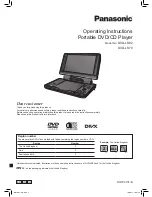
factors.
RVMP or Flex Power cannot control where the RV goes or how the generator is used. There are many local
environmental effects that can affect the cooling performance of the generator, some of which the user can
control, and some they cannot.
Hot Ambient Air
Generally speaking, a generator’s rated power output will decrease as the ambient temperatures increase.
As a general rule of thumb, a user can expect approximately 1% decrease in power for every 5.5
0
C (10
o
F)
above 25
0
C (77
0
F). It is important for the user to recognize these limitations and the environmental
challenges that the generator may have with cooling.
Ventilation
If the generator is not properly ventilated, it may overheat and affect its performance. Long periods of
overheating may cause the generator to shut down and may ultimately damage the equipment. The
generator draws cooling air from the top and sides of the unit while expelling hot air out of the bottom, see
Fig. 7 below.
Fig. 7
However, the cool air intake and hot air discharge have potential to recirculate hot air. Lack of intended
paths for airflow, positioning of the generator, compartment spacing around the generator, and long skirting
can cause hot exhaust to be ingested into the intake of the generator, an effect known as “hot air
recirculation.” Hot air recirculation must be considered in each case, and a conscious effort in installation
design must be given to avoid it.
A possible design methodology is to use a door vent to allow for dedicated cooling air inlet to the generator.
Door vents can sometimes be an effective option to separate inlet and outlet ventilation air in generator
installations positioned in compartments or in hang-down kits below the floor of a coach. They can also be
21
















































